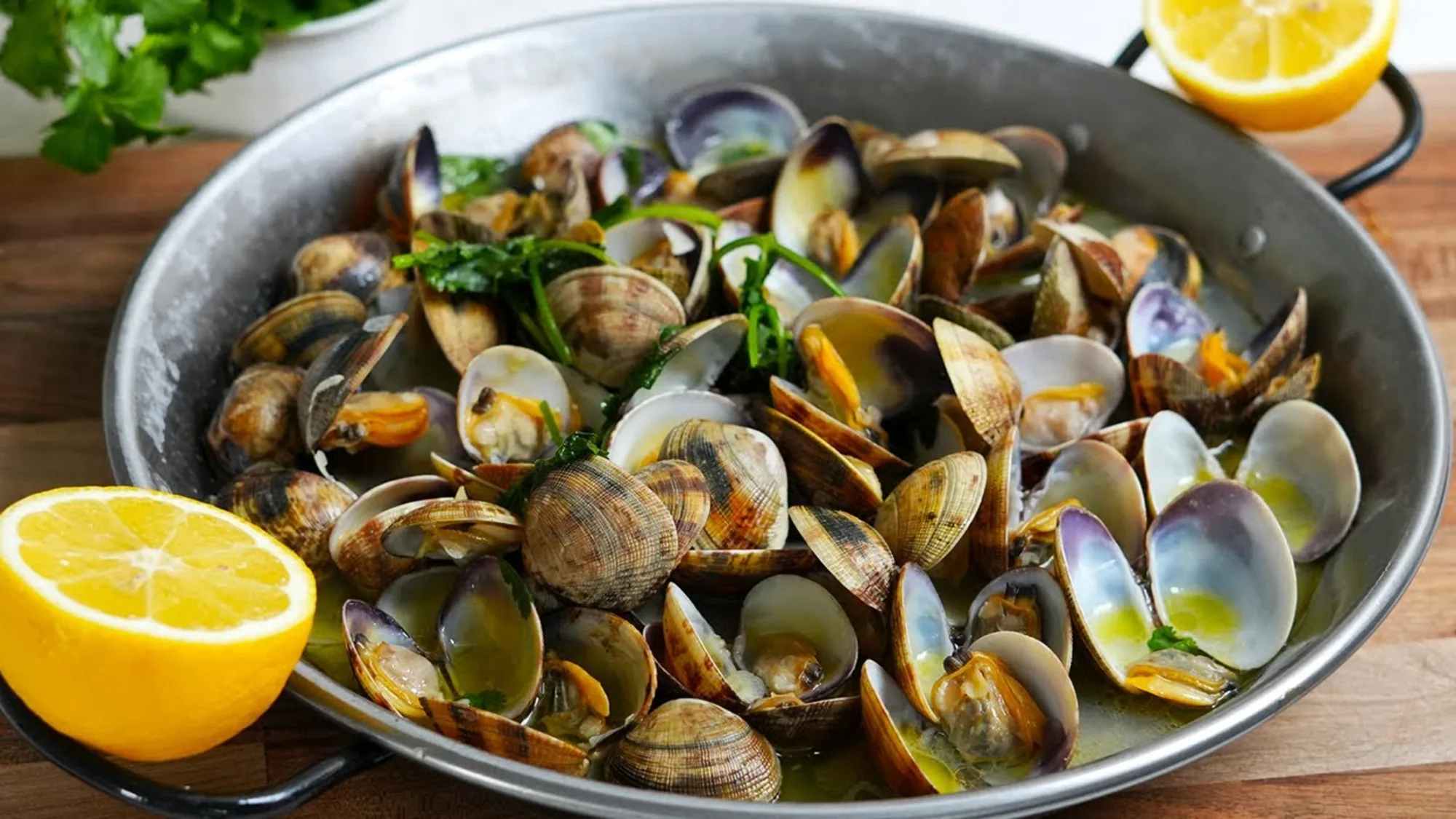
Amêijoas à Bulhão Pato
Fresh clams cooked in white wine, garlic, olive oil, and coriander.
Ingredients
- •Fresh clams
- •White wine
- •Garlic
- •Olive oil
- •Coriander
- •Lemon
- •Black pepper
Instructions
Clean Clams
Purge clams in salt water
Prepare Sauce
Sauté garlic in olive oil, add wine
Cook
Add clams and cook until they open, garnish with coriander
Amêijoas à Bulhão Pato is one of Portugal's most beloved seafood dishes, featuring fresh clams cooked in a mouthwatering sauce of white wine, garlic, olive oil, and fresh coriander. This simple yet elegant dish perfectly represents the Portuguese coastal cuisine, where seafood is celebrated in its purest form.
The dish is named after the 19th-century Portuguese poet Raimundo António de Bulhão Pato, who was known not only for his poetry but also for his love of good food. While he didn't create the dish himself, his name became forever associated with this delicious clam preparation that embodies the simplicity and flavors of Portuguese cooking.
The preparation is beautifully straightforward - fresh clams are cooked in a fragrant mixture of olive oil and generous amounts of garlic, then steamed with white wine until they open, releasing their sweet, briny juices into the sauce. The dish is finished with a shower of fresh coriander and a squeeze of lemon, which adds brightness and complements the natural saltiness of the clams.
While the classic recipe remains a favorite, some modern variations might include the addition of butter for richness, or a touch of piri-piri for heat. Some cooks also add diced tomatoes or bell peppers, though purists prefer the original, simpler version.
In Portugal, Amêijoas à Bulhão Pato is typically served as a starter or as part of a larger seafood meal. It's essential to have plenty of crusty Portuguese bread on hand to soak up the incredible sauce - this is known as 'molhar o pão' (dipping the bread) and is considered one of the best parts of the experience. The dish pairs beautifully with a chilled vinho verde or a crisp white wine from Portugal's Alentejo region.
From a nutritional standpoint, this dish is relatively healthy, being high in protein and minerals from the clams, particularly iron and vitamin B12. The olive oil provides healthy fats, and garlic offers immune-boosting properties. However, those with shellfish allergies should obviously avoid it. It's also worth noting that while this dish is naturally gluten-free, cross-contamination could occur when served with bread. For the best experience, ensure your clams are fresh and properly cleaned to avoid any grit in the final dish.
